Funding for Camera Trap Projects
24 January 2024 5:23pm
9 February 2024 6:42pm
I'm in Paraguay!
I'm looking for any starting points - databases, specific orgs i can apply to etc.
I have found a nonprofit I've been working with and have found several grants to apply through my partnership with them but am obviously looking for more.
9 February 2024 6:45pm
This is a great starting point - thanks for the help
eDNA Innovation Grants
9 February 2024 4:26pm
Bio-Logging Science Symposium
9 February 2024 3:59pm
WILDLABS Awards 2024: Meet the judges
9 February 2024 9:52am
Conservation Technology Intern - The Wildlife Restoration Foundation
8 February 2024 7:52pm
Improving camera traps for monitoring mustelids
8 February 2024 7:35pm
Camera traps often monitor larger animals, so passive infrared sensor tends to miss small and fast species like mustelids. Researchers tested the Mostela against a tree-mounted camera trap to compare performance and make recommendations for future development and testing.
ISPA: A New System for Transcribing Animal Sounds
8 February 2024 7:17pm
These researchers are introduce the ISPA (Inter-Species Phonetic Alphabet) as a new way to precisely interpret and transcribe animal sounds. By using text to represent sounds, existing human language machine learning models could be used more successfully in field research.
Apply Now: UW Data Science for Social Good Projects
8 February 2024 6:45pm
Sign up for Data Science for Social Good 2024! This summer program is a great opportunity to get dedicated data science support on a conservation (tech) project or to get rich experience as a student in the field. More info in the link - student apps due 2/12, projects due 2/20.
PhD Opportunity - Exploring plants’ sensing capability with vibroacoustics
8 February 2024 5:35pm
Account Manager - Conservation & Nonprofit
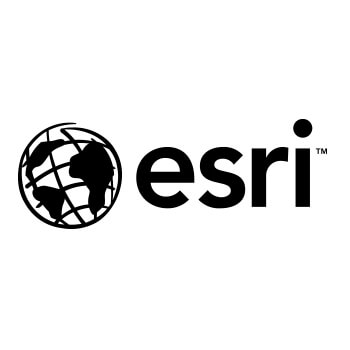 esri
esri
8 February 2024 4:30pm
Fast-track NbS investments with in-house due diligence
7 February 2024 3:42pm
Rapid onsite DNA test identifies bushmeat at airport
6 February 2024 3:47pm
World Wildlife Day 2024 UN Celebration & Networking Event
6 February 2024 2:37pm
6 February 2024 9:08pm
Southern African Wildlife Management Association Conference 2024
6 February 2024 12:20pm
Conservation Technology for Human-Wildlife Conflict in Non-Protected Areas: Advice on Generating Evidence
22 January 2024 11:36pm
23 January 2024 1:54pm
This is an area where my system would do very well in:
Also, as you mention areas dominated by humans, there is a high likelyhood that there will be enough power there to support this system, which provides very high performance and flexibility but it comes with a power and somewhat a cost cost.
Additionally, it's life blood comes with generating alerts and making security and evidence gathering practical and manageable, with it's flexible state management system.
Ping me offline if you would like to have a look at the system.
4 February 2024 8:16am
Hi Amit,
The most important thing is that the livestock owners contact you as soon as possible after finding the carcass. We commonly do two things if they contact us on the same day or just after the livestock was killed:
- Use CyberTracker (or similar software) on an Android smart phone to record all tracks, bite marks, feeding pattern and any other relevant signs of the reason for the loss with pictures and GPS coordinates. [BTW, Compensation is a big issue -- What do you do if the livestock was stolen? What do you do if a domestic animal killed the livestock? What if it died from disease or natural causes and was scavenged upon by carnivores afterwards?]
- In the case of most cats, they would hide the prey (or just mark it by covering it with grass or branches and urinating in the area). In this case you can put up a camera trap on the carcass to capture the animal when it returns to its kill (Reconyx is good if you can afford it - we use mostly Cuddeback with white flash). This will normally only work if the carcass is fresh (so other predators would not be able to smell it and not know where it is yet), so the camera only has to be up for 3-5 days max.
This is not really high-tech, but can be very useful to not only establish which predator was responsible (or if a predator was responsible), but also to record all the evidence for that.
AI volunteer work
3 February 2024 12:29pm
Passionate engineer offering funding and tech solutions pro-bono.
23 January 2024 12:06pm
26 January 2024 3:18pm
Hi Krasi! Greetings from Brazil!
That's a cool journey you've started! Congratulations. And I felt like theSearchLife resonates with the work I'm involved round here. In a nutshell, I live at the heart of the largest remaining of Atlantic forest in the planet - one of the most biodiverse biomes that exist. The subregion where I live is named after and bathed by the "Rio Sagrado" (Sacred River), a magnificent water body with a very rich cultural significance to the region (it has served as a safe zone for fleeing slaves). Well, the river and the entire bioregion is currently under the threat of a truly devastating railroad project which, to say the least is planned to cut through over 100 water springs!
In face of that the local community (myself included) has been mobilizing to raise awareness of the issue and hopefully stop this madness (fueled by strong international forces). One of the ways we've been fighting this is through the seeking of the recognition of the sacred river as an entity of legal rights, who can manifest itself in court, against such threats. And to illustrate what this would look like, I've been developing this AI (LLM) powered avatar for the river, which could maybe serve as its human-relatable voice. An existing prototype of such avatar is available here. It has been fine-tuned with over 20 scientific papers on the Sacred River watershed.
And right now myself and other are mobilizing to manifest the conditions/resources to develop a next version of the avatar, which would include remote sensing capacities so the avatar is directly connected to the river and can possibly write full scientific reports on its physical properties (i.e. water quality) and the surrounding biodiversity. In fact, myself and 3 other members of the WildLabs community have just applied to the WildLabs Grant program in order to accomplish that. Hopefully the results are positive.
Finally, it's worth mentioning that our mobilization around providing an expression medium for the river has been multimodal, including the creation of a shortfilm based on theatrical mobilizations we did during a fest dedicated to the river and its surrounding more-than-human communities. You can check that out here:
Let's chat if any of that catches your interest!
Cheers!
2 February 2024 1:22pm
Hi Danilo. you seem very passionate about this initiative which is a good start.
It is an interesting coincidence that I am starting another project for the coral reefs in the Philipines which also requires water analytics so I can probably work on both projects at the same time.
Let's that have a call and discuss, will send you a pm with my contact details
There is a tech glitch and I don't get email notifications from here.
Let's save our environment
31 January 2024 12:52pm
Remote Sensing and Research group at Dedan Kimathi University have come up with this ebook after a project observing the deterioration of part of the aberdare.
I always welcome efforts that involve young learners so that they benefit and participate. Thank you RSRG Team.
Underwater camera trap - call for early users
13 December 2023 11:44pm
23 January 2024 1:21pm
Many thanks for your contribution to the survey! We are now summarizing the list of early users and making our best to propose a newtcam to all in due time.
All the best!
Xavier
30 January 2024 10:20pm
Is there still time to apply?
31 January 2024 12:12pm
Hi Danilo, yes just in time ;-)
Owl call detection software
17 October 2023 4:47am
26 January 2024 3:33pm
I have a question about Arbimon. I'm working on a project looking for bird use of wet meadow (and associated matrices of habitat). We have two bird lists we've created for BirdNet, a "Master List" of all species (to get an understanding of community data as per input from Indigenous partners) and a "Focal Species List" as per the land managers in put. I will have volunteers doing manual verification + passive listening to attempt to catch false positives and species BirdNet has missed. I recently learned about Arbimon from the Soundscapes to Landscapes project and I'm curious about the audio detector function. Is it detecting spectrograms/sonograms from a provided classifier or does it function similar to BirdNet where we can tell it which species to look for?
30 January 2024 9:05am
We are currently working on Eurasian Pygmy, Tengmalm's and Tawny owl calls recognition. It's not a trivial task if you want to include different call types (male, female, pair, chicks), that's why we started with only 3 species. If you are interested in these 3 European species, drop me a line.
30 January 2024 10:53pm
Hi Teresa,
Thanks for your interest in Arbimon! The platform has a couple different analysis tools that range from unsupervised (like audio event detection & clustering, or AED-C) to semi-automated (pattern matching, random forest). We've got lots more info about each in our support docs here.
The AED-C is an unsupervised machine learning model, so you aren't providing any labels (though the validation page allows you to assign events or clusters as particular species after the fact). The pattern matching is a cross-correlation template matching function where you provide 1 template (example of the species-specific call you're looking for) and the algorithm looks for matches similar to that template. Random forest is a decision-tree-based machine learning model where you provide training clips (presence & absence clips for a species) which the model uses to learn how to classify that species' call. We have developed a number of CNNs (like BirdNet is) but they have more of a regional focus (e.g., one for Kenya, one for western Sumatra, etc. etc.). Right now we run these on the backend, but we are currently working on a public-facing CNN page that we hope to phase in this year.
Hope that helps, but feel free to reach out if you have more questions! You're welcome to also email me directly at [email protected] .
All the best,
Carly
Using drone or other unmanned vehicle for DNA sampling on fresh elephant dung in a Baï, Congo Rainforest.
29 January 2024 9:44am
30 January 2024 10:30am
I think we can habituate elephant to noise, especially if it's could looks like a natural one.
The problem is that many elephants are concentrated in the baï and if we want to avoid DNA contamination we have to sample it quite fast.
30 January 2024 8:19pm
Hi Antoine,
I would recommend talking to the engineers at Outreach Robotics - @Gcharron .
We have been working on collecting tools for rare plants, and I would guess it wouldn't be a huge adjustment to collect elephant dung. I think the amount of dung required for analysis will drive the size of the collecting drone. Maybe the drone could be up very high to not disturb the elephants with a long line sampling mechanism?
30 January 2024 9:01pm
Forgot to mention this wildlife drone group -
Project Planning for Wildlife Conservation
30 January 2024 3:13pm
Detection and removing of windy events in wild acoustic recordings
12 June 2023 1:28pm
12 July 2023 4:07pm
Hi everyone!
@baddiwad was one of our fantastic speakers in our June Variety Hour show, so we had the chance to hear about her work in a lot more detail. If you're interested in finding out more about Franscesca's project, catch up here:
19 July 2023 12:21am
Audacity has a noise filter which one 'trains' on a piece of recorded noise. Perhaps it is worth a shot. Freeware, open source, and with a community of developers and users.
30 January 2024 2:00pm
Hi Francesca!
Did you managed this problem somehow? Can you post the workflow or the solution that worked for you?
Landscape of technology solution for African lion conservation
15 January 2024 11:03am
29 January 2024 10:25am
Hi Simon,
Thanks for your reply. I would be interested in having a chat with you and hear more about the work you are doing! Lets connect and we can try to schedule a call in the coming days.
Thank you,
Best,
Jacobo
29 January 2024 11:03am
Hi Maureen,
Thank you very much for your insights. I would definitely like to connect with you and discuss this further! I will reach out to you so we can potentially schedule a quick call and chat about this further.
Thank you,
Best regards,
30 January 2024 10:47am
Hi Jacobo,
We have launched a new tracking/logging/finding technology which you may find of interest https://www.tagranger.com/
Based on LoRaWAN (but with yor own handheld gateway) you can communicate with your Tags in real time. As well as requesting current GPS locations from long distances away you can also use the integrated ranging tools which give you distance to your Tag in metres when you get closer.
Key features:
LoRaWAN (tested up to 21km line of sight) No infrastructure required, but you can also add it to your own LoRaWAN network.
UWB ranging gives distance (in metres) to the Tag up to 150m away
Hybrid Ranging combines the equivalent of a VHF pinger from a few km away (line of sight) with the UWB ranging when you get closer
Log Download remotely using UWB radio
Ultra light 39g Tag
Power Efficiency Defined by your configuration profie, 2 days to 4 years!
Let me know if you would like any further help with this.
Craig
Questions regarding the use of solar panels to extend battery life of GPS collars
6 January 2024 8:44pm
24 January 2024 10:45am
With a Vectronic Vertex Plus 2D collar, 32Hz 3D acceleration and 15min position fix intervals you can expect between 3-6 months of lifetime using Iridium as position transfer.

This project seem to be using both 2D and 3D sized collars on lions:
https://www.vectronic-aerospace.com/projects/#KopeLion
28 January 2024 10:27pm
Lars,
As always, your insights are great! The GPS Plus X battery life calculator is great! I've downloaded it and have been toying around with it, very convenient when thinking about sampling schedules. Curious as to why more tech developers don't incorporate something similar into their own programming/analysis software. Very useful.
I've got a few meetings set up with a couple different tech developers, but may reach to Vectronic here. At first glance, their collars seem great! I appreciate the recommendations.
I must admit, I am not well versed in Python, but I am looking into something that wold be the R equivalent. If I don't have much luck, I may try and take a look at how that package was made in Python and attempt to recreate it in R.
You're the best Lars! Thanks!
Cheers,
Travis
28 January 2024 10:42pm
Hi Bill,
I don't believe I will need them to be extremely accurate, but will need a good degree of accuracy for some behavioral classification and habitat use analyses. In regards to the solar, tracking the solar cycle is a great suggestion. I have also considered having some thresholds programmed in the accelerometer to power off both sensors during periods of sleep/rest in order to conserve battery life. I did this same thing in my last study for the GPS only, so there wouldn't be instances where the trackers continued to try and unsuccessfully acquire GPS fixes while the bats where inside their caves resting. After the bat's surge axis dropped into the -1 and there was 10 unsuccessful GPS fix attempts in a row, the GPS powered down.
Thanks for the suggestions and insights Bill!
Best,
Travis
Reasonable price for drone pilot (south africa)?
27 January 2023 11:20am
16 January 2024 12:21pm
Hello Stephanie,
I am not sure if you are still monitoring this thread, but if you need any information, please let me know. I have flown drones for a couple of years in Zimbabwe and South Africa in conservation and anti-poaching operations. I would be happy to answer any questions you may have.
Regarding the £500-700 range you mentioned, it seems waaaayyyy overpriced. Those rates are usually charged by lawyers and accountants in South Africa.
If you have found the information you were seeking, I wish you all the best.
Quin
26 January 2024 10:39pm
Hi Steph,
I think everyone below has summarised it pretty well.
A couple of comments to add.
Select your pilot well - We offer drone flying services. This wasn't our intention, initially, however we have determined that there are many drone pilots, but fewer who do it really well. Having said that, we work predominantly with animal tracking equipment, not just flying straight line vectors, if this is what you are undertaking.
In Australia, fees to become a pilot are about $5,000 AUD, and a reasonable commercial drone with changeable payload capability costs around $20,000- $30,000 AUD, and then as is suggested below, there are insurance and factoring in repairs and maintenance, and of course eventual replacement costs, travel, an hourly rate as wages etc. Obviously, the day rates you have listed aren't profit, they include cost.
Paul
Wildlife Drones
28 January 2024 4:59pm
Hi, I have used a commercial company for drone work for my PhD and they were willing to give me a significant discount for research purposes. One thing to consider is that in SA a drone pilot requires a pilots license and there is quite some red tape to go through which does make it much more complex than just going out and buying a drone oneself. The price you mention seems on the high side to me but I'm not sure if that already includes the drone, sensors, flight permissions, travel of the pilot to and from your location and any other costs.
Image analysis with volunteers
26 January 2024 6:30pm
27 January 2024 9:14am
I have a little experience with Timelapse and would say it is definetely worth the invested time.
The developer Saul Greenberg has made a ton of documentation on its use and is also very approachable in person, if you have any issues.
I can only highly recommend it.
27 January 2024 9:01pm
Thank you! This is encouraging. It's also nice to know that Saul is approachable for problem-solving issues.
Jupyter Notebook: Aquatic Computer Vision
25 January 2024 5:50am
26 January 2024 1:46pm
This is quite interesting. Would love to see if we could improve this code using custom models and alternative ways of processing the video stream.
27 January 2024 4:07am
This definitely seems like the community to do it. I was looking at the thread about wolf detection and it seems like people here are no strangers to image classification. A little overwhelming to be quite honest 😂
While it would be incredible to have a powerful model that was capable of auto-classifying everything right away and storing all the detected creatures & correlated sensor data straight into a database - I wonder if in remote cases where power (and therefore cpu bandwidth), data storage, and network connectivity is at a premium if it would be more valuable to just be able to highlight moments of interest for lab analysis later? OR if you do you have cellular connection, you could download just those moments of interest and not hours and hours of footage?
27 January 2024 6:11am
Am working on similar AI challenge at the moment. Hoping to translate my workflow to wolves in future if needed.
We all are little overstretched but it there is no pressing deadlines, it should be possible to explore building efficient model for object detection and looking at suitable hardware for running these model on the edge.
Analysis Methods for Localization with Networks of Fixed Radio Receivers
26 January 2024 2:36pm





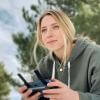










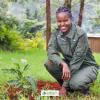



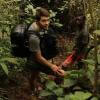









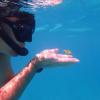

9 February 2024 6:42pm
I'm in Paraguay!
I'm looking for any starting points - databases, specific orgs i can apply to etc.
I have found a nonprofit I've been working with and have found several grants to apply through my partnership with them but am obviously looking for more.